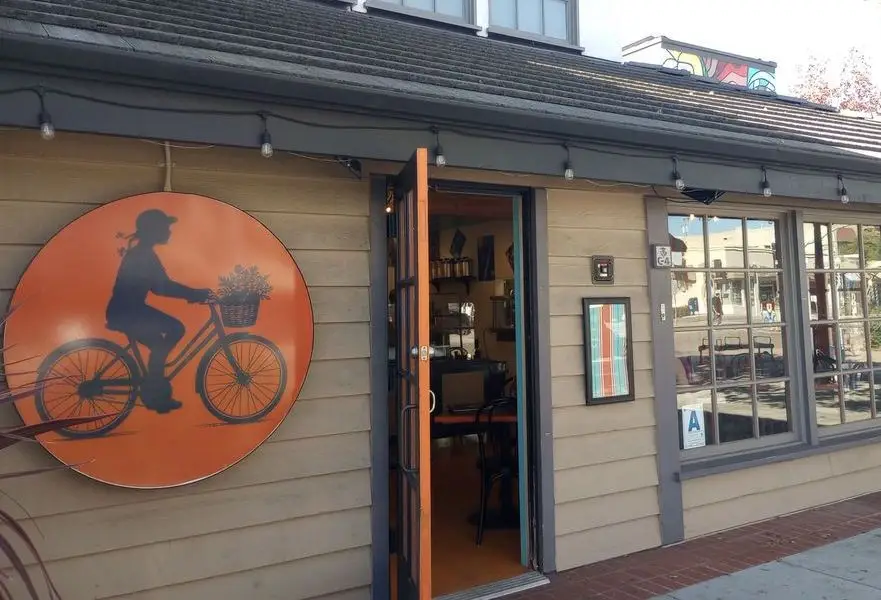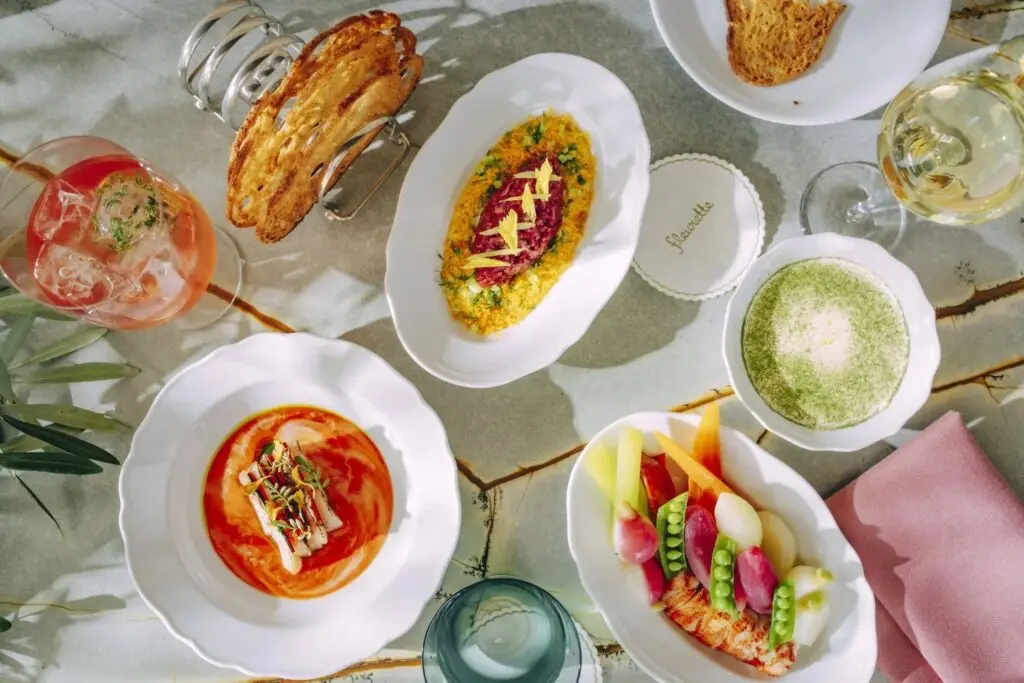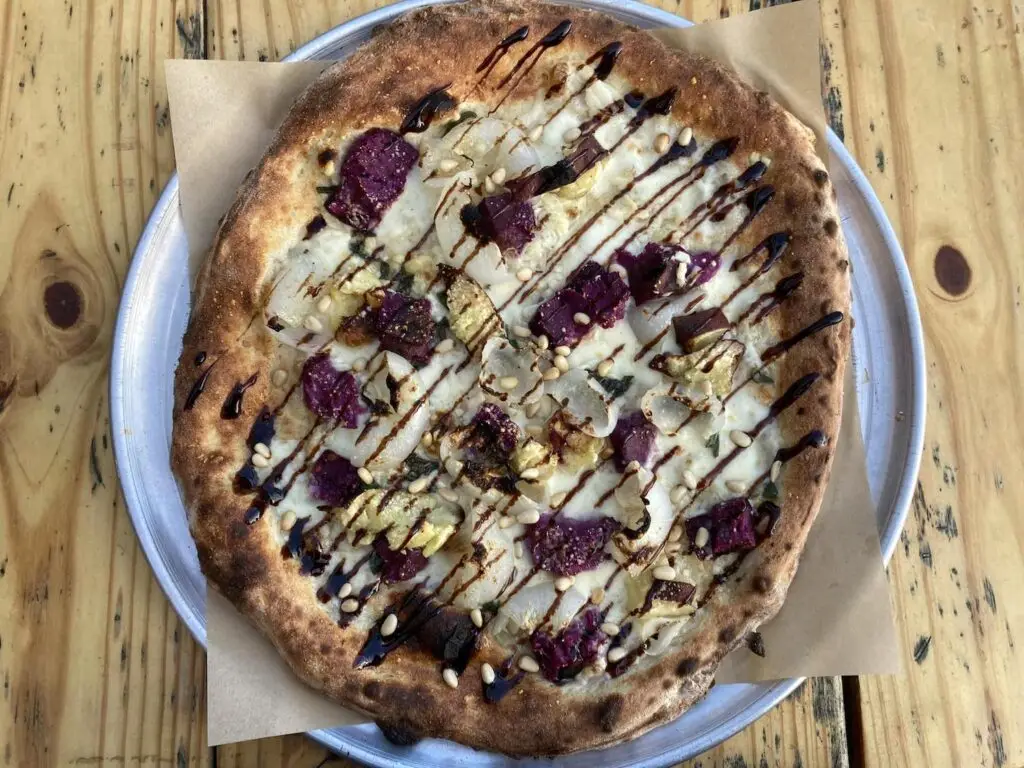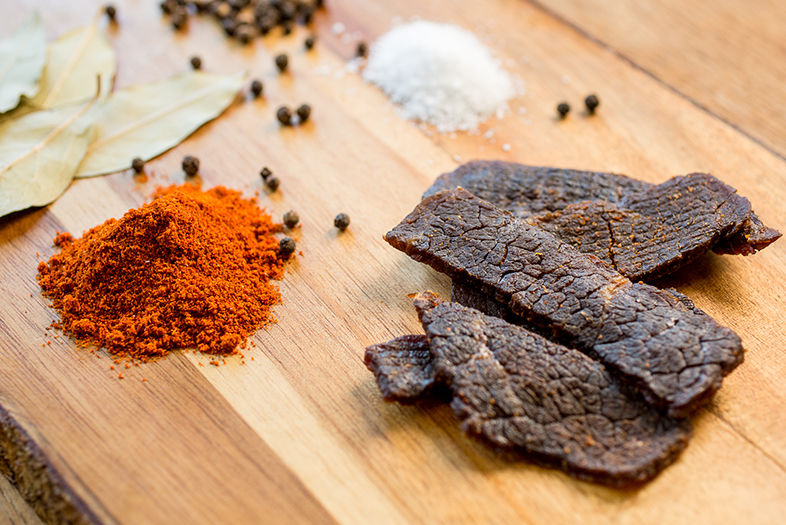It’s a revelation. A taste you’ve had a thousand times before. The taste of road trips. Arguments can be made that beef jerky isn’t the best road trip snack, and those arguments would be wrong. Cars are actually incapable of driving over 100 miles at a time without jerky somewhere in the vehicle.
But this jerky is dramatically different. Drastically better. It’s thicker, chewier, beefier, not too salty, and not sugary at all. It tastes like a top-notch steak that’s been intensified and shrunk.
That’s because the bowl of beef jerky sitting in front of me at San Diego’s top steakhouse, Cowboy Star, is made with American Wagyu beef from Snake River Farms. Snake River, in Eastern Idaho, is one of America’s most respected cattle ranches. The animals graze freely for the first year of their life. Hormones and antibiotics are never used.
Happy cows may sound like a marketing ploy, but it’s a real thing that’s been proven in study after study: unstressed animals produce better meat. I once visited with one of the country’s top beef experts, and he told me that after a really bad storm, he’d actually seen near-black meat from one of the animals. They’re called “dark cutters” in the industry.
Snake River focuses on de-stressing animals. Its employees are trained in how to make sure the animals are never stressed, even during transit. That’s why top chefs love their beef and it consistently rates among the best in the country.
Making it into jerky may seem a tad sacrilegious. But the taste proves the project. Executive chef and co-owner Victor Jimenez has been serving the jerky, made in-house, to guests for the last year. “We found the beef was such high quality, the best thing to do to it was nothing,” says fellow co-owner Angie Weber. “No nitrates, no soy, no GMOs, no sugar. It’s gluten-free. We’re using local amber honey, which is kind of an antioxidant, a little smoked paprika, garlic, ancho chile powder.”
Third co-owner Jon Weber explains, “We were sitting at the bar and one of our regulars said, ‘Let’s put this out there.’ We put him off for about six months. Finally, he said, ‘No, I’m dead serious.’” So now the partners are bringing the cult treat to market under the name C-Star Provisions. And meat snacks are a thriving market. Between 2016 and 2017, meat snack sales increased 3.5 percent, to $2.8 billion. There are many reasons: Americans are snacking more, sitting down for meals less; we’re going away from carbs and gluten and toward proteins, with diets like paleo, Whole30, keto. Since fat is diminished in the drying process, jerky has been touted as a good snack for the health nut and CrossFit crowd.
But not all jerky. Most of the commercial brands add tons of salt, corn syrup, caramel coloring, maltodextrin, nitrates, MSG, yeast extract, smoke flavoring, sodium nitrates. For instance, the website Eat This, Not That analyzed a package of Krave jerky and concluded “This tiny, one-ounce serving has a whopping 10 grams of sugar. A third of every gram of jerky is sugar. For comparison, a fifth of each gram of a glazed Krispy Kreme donut is sugar.”
“The only thing I do is fly around and buy beef jerky,” says Angie. “What I’ve found is that most of them use crappy meat and are loaded with sugar. This was supposed to be a healthier backpacker snack.”
The higher-end beef jerky market is growing, with brands like Country Archer, Nick’s Sticks, Field Trip, The New Primal, Think Jerky, and Brooklyn Biltong, many of them using pure ingredients and grass-fed beef. San Diego’s own Jerky’s Gourmet uses grass-fed beef.
Jerky’s never been cheap, and high-quality jerky is even more expensive, because quality ingredients cost more. Many of the elite brands sell 2.5 ounces for $16–$18. Jon, a jerky junkie, has a pet peeve of not getting enough jerky in each package. So they’ll sell three-ounce packages for about $19.
“It’s not cheap,” says Angie. “But that’s okay. We’re not looking to sell this in 7-Eleven. We want to bring the steakhouse to jerky.”
Jimenez’s jerky is marinated for a minimum of 24 hours, then dehydrated. He checks it every five hours to monitor the dehydrating process. To gain momentum for the new product, C-Star Provisions launched a Kickstarter campaign to fund their first run of 10,000 packages. They’ve already been in talks with gourmet retailers, and will sell it at the restaurant’s butcher shop—which they’ll completely expand this November and open up into a sort of European boucherie, with seating.
All five of the Cowboy Star employees who’ve been at the restaurant since it opened in 2008 were given an ownership percentage in the new venture. If the original product works, they’d like to expand with other flavors based on bartender Garth Flood’s craft cocktails.
“We might do a spicy margarita, based on our Rooster Cockburn, using Anaheim chile and lime,” says Jon. “Maybe an old-fashioned jerky with cherry and bourbon.”
“Owning a restaurant in this time and climate is not fun,” says Angie. “This has been really fun for us.”
C-Star Provisions Original Recipe is being sold at Cowboy Star, 640 10th Avenue, Downtown. You can check out their Kickstarter campaign here.
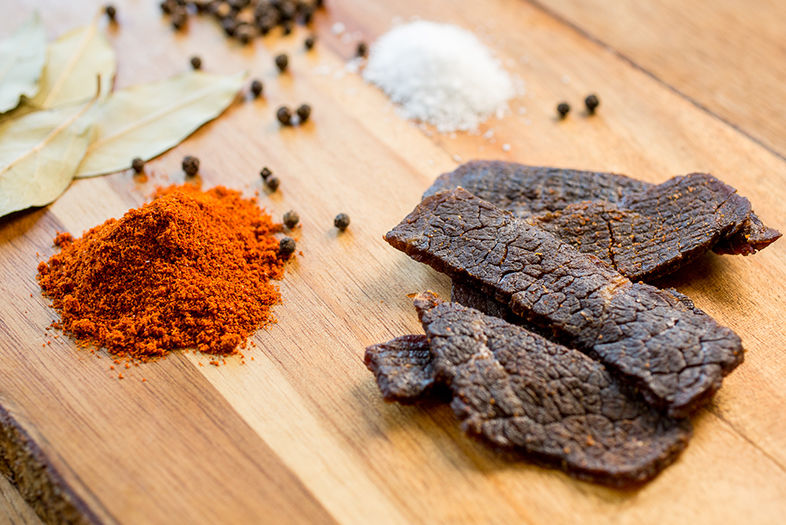
PARTNER CONTENT
Cowboy Star Launches a Line of Gourmet Beef Jerky
